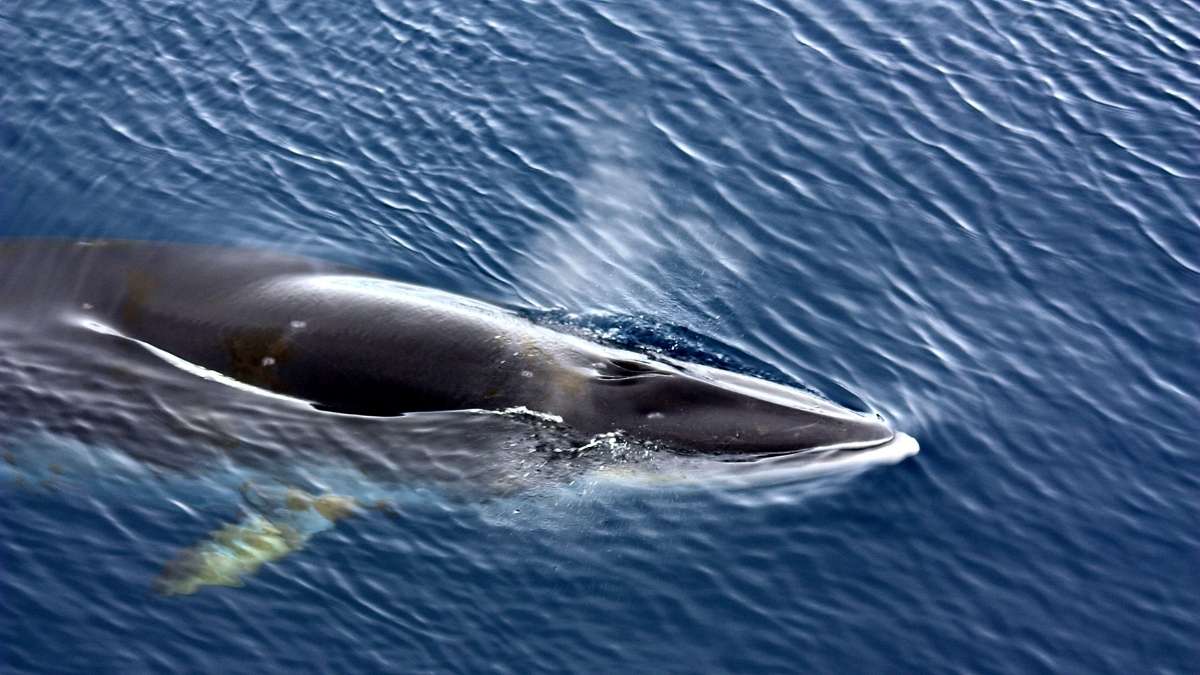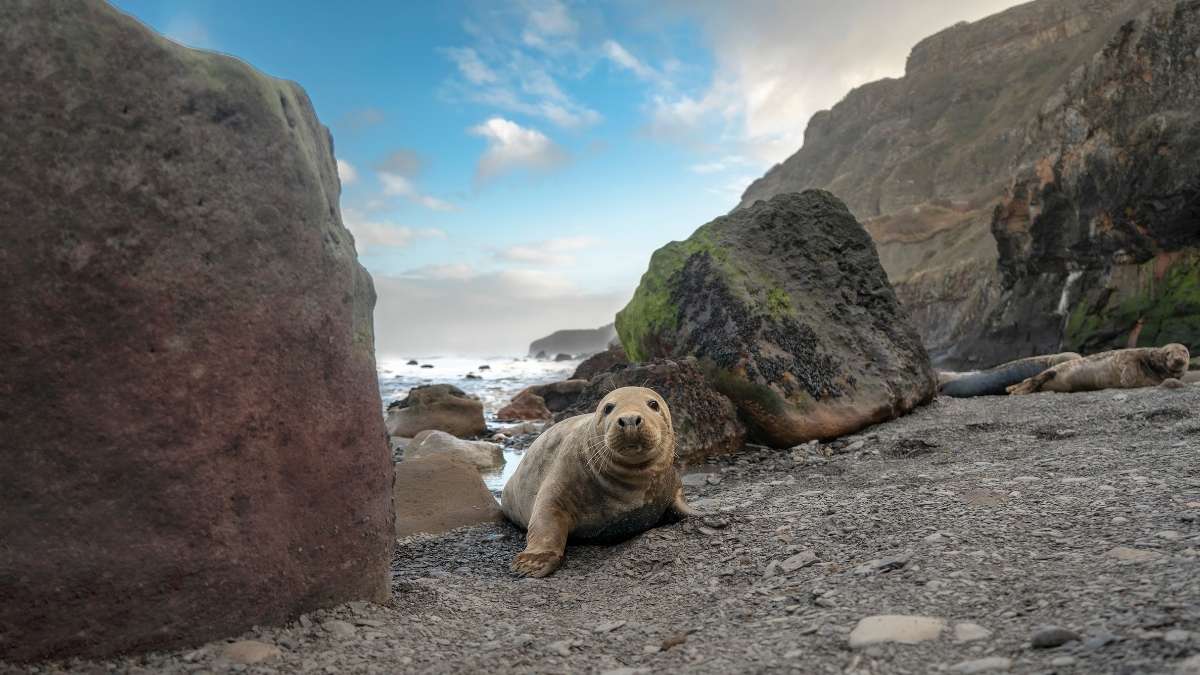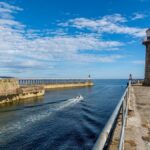From an abundance of moorland birds to grey seals and even minke whales, the North Yorkshire Coast is just bursting with wildlife. Here are the different types of wildlife that you can find whilst visiting the North Yorkshire Coast.
One of the most amazing things about the North Yorkshire Coast is its abundance of wildlife. In this article we cover the different types of wildlife you can spot on the North Yorkshire Coast. We also highlight tours and trips that you can take. That way you've got a pretty good chance of seeing something special.
Whales and Dolphins
It amazes us that people don't realise you can spot so many different types of Whales along the North Yorkshire Coast. Often spotted are minke, fin, sei, pilot and humpbacks as well as porpoise and dolphins. From June up until November is the perfect time to spot white-beaked dolphins and Minke Whales as they follow mackerel and herring shoals swimming south from the Arctic.

Whitby Mini Guide
We have created a FREE mini-guide with all the essential information about Whitby, now available for instant download.

Whitby Whale Watching Trips
So, I guess you fancy getting closer to these amazing creatures? Of course, you do! We suggest booking a trip with Whitby whale watching. Their trips offer the chance to see whales and dolphins up close (if you're lucky). They also give you the chance to see seals and many species of birds.

The whale watching trips can last from 4 to 8 hours and sometimes go have to go many miles offshore. Minke whales, with their distinctive pointed heads and curved back fin, are often seen, they can be up to 10m long. There are no guarantees you will see whales or other wildlife, the crew are fantastic though and will do their best to find them for you. Find more information here.
Grey and Common Seals
Grey and common seal colonies can be found at the base of the cliffs along the North Yorkshire Coast. You can learn more about the Ravenscar seal colony here. During June and July, there is an abundance of common seal pups born. Grey seals have their pups ashore during November.

If you ever do come across a seal please take care, keep a good distance and do not let dogs get close to them. Any disturbance can result in pups dying as the frightened mother abandons them. The best and safest way to observe the seals is with binoculars or to join a boat trip.
Yorkshire Coast Boat Trips

Yorkshire Coast Boat Trips offer a variety of different boat trips, on one they even slow down at the headland of Ravenscar so that you can try to spot the seals as they relax in the sunshine. If you are lucky you might even see them hunt in their natural habitat.
Seabirds
The 122m chalk cliffs around the Flamborough and Filey coastline are home to the largest mainland seabird colony in the UK. If you visit here you are almost guaranteed to see gannets, puffins, kittiwakes, and razorbill, you're even more likely if you visit during the breeding season. From April to August more than 400,000 birds buzz around the cliffs and the skies are alive with puffins, gannets and guillemots.

RSPB Seabird Cruises
The cliffs at Bempton are absolutely alive with almost half-a-million seabirds from April onwards. The RSPB, in partnership with the Yorkshire Belle, run a series of 3-hour cruises from Bridlington harbour to Bempton Cliffs. This is an ideal trip for both beginners and experienced wildlife enthusiasts. Find more information here.
Other Marine Wildlife

Rockpooling is great fun and a way to find lots of marine wildlife. Simply head out with a bucket and a net, then go to Staithes, Port Mulgrave, Runswick Bay, Whitby or Robin Hood's Bay (we have the most luck in those places!) Kids love finding crabs, barnacles, limpets, cockles, sea anemones, whelks and sea hares. There are plenty of waders, sea birds and migrant species to spot too.
Responsible Rockpooling top tips;
- Wash your hands. Approach your chosen rock pool as quietly as you can.
- Observe the pool and surrounding rocks, and turn stones to find anything hiding underneath.
- To get a closer look you can, very carefully lower your bucket into the water, then pull it back up to see what marine life you have.
- Record and identify what you find! Take photos and check up online later, or use a printed guide.
- Once you've finished studying your findings, return them carefully to the pool by re-submerging your bucket. Don't leave them in the bucket for too long, they can get stressed by temperature changes
- Wash your hands and any equipment you have used thoroughly.
Woodland and Moorland Wildlife
If you get up really early you might get lucky enough to spot both roe and fallow deer. Other mammal species that might be encountered are more relatively common such as badgers, foxes, stoats, weasels, wood mice and shrews. The North York Moors‘ forests are also home to at least one pine marten however it is very rare to see.

Yorkshire Coast Nature's Wildlife Safaris
Yorkshire Coast Nature offer a variety of different tours, events and workshops including wildlife safaris. From short tours for those with an interest in specific areas to photography workshops or longer experiences, everyone is welcome and can enjoy the species and landscapes of the Yorkshire coast. They are also happy to arrange bespoke tours for individuals and small groups.
Bird Watching
In Wykeham Forest there is a permanent Raptor Viewpoint, here you can spot goshawks, merlin, honey buzzards, common buzzards, peregrine falcons, red kites, and sparrowhawks. Even if you don't get lucky enough to see those impressive birds, the view over Troutsdale will not let you down!

If you're looking for bird hides there are plenty to be found at The Moors National Park Centre, Danby in Crow Wood, Scaling Dam and Howsham Mill. The centre at Danby features a live webcam for some of their nestboxes. Head over to Sutton Bank National Park Centre, the well-stocked bird bistro here is fluttering with life, hopefully, you will be lucky enough to see a turtle dove in spring and early summer.
Yorkshire Coast Nature – Forest And River Birding Trip in Yorkshire

This forest and river birding trip lasts the full day and takes you on an adventure around the Great Yorkshire Forest at a relaxed pace. You can expect to see over 4o different species of birds. You will visit four main forest areas: Broxa, Langdale, Dalby, and Cropton. Then you will also get to pass through a number of picturesque, historic North Yorkshire villages. Find more information here.
Whether you choose to take one of the exciting wildlife trips or witness wildlife out and about exploring yourself. The North Yorkshire coast has so much to offer, you're sure to make everlasting memories.
Let us know if you have ever taken a trip with one of our suggested providers, and tell us what you thought in the comments.













Cannot wait to visit Thank you so much for giving us all this information.